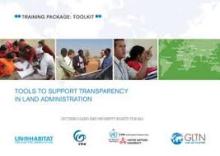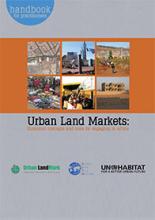Land Library Search
Through our robust search engine, you can search for any item of the over 73,000 highly curated resources in the Land Library.
If you would like to find an overview of what is possible, feel free to peruse the Search Guide.
/ library resources
Showing items 1 through 9 of 23.This case study analysis forms part of the publication series “Unpacking metropolitan governance” that documents experiences and gives hands-on approaches for stakeholders in the field of sustainable development of metropolitan regions.
This training toolkit aims to sensitize government agents about land administration, develop their capacity to address issues of corruption and to enhance transparency in the land sector.
This trainer's guide is complementary to this training toolkit. It is part of an approach that aims to sensitize government agents about land administration, develop their capacity to address issues of corruption and to enhance transparency in the land sector.
El presente trabajo intenta describir brevemente la situación del derecho al agua en nuestro subcontinente.
This Handbook introduces key economic and related concepts explaining the functioning of urban land markets. You will find in this Handbook tools for engaging in a critical analysis of conventional economics, particularly in the understanding of how African urban land markets work.
La expansión acelerada de las áreas urbanas no es algo nuevo para las ciudades latinoamericanas.
Este artículo evalúa las diferentes reformas agrarias en Colombia desde comienzos del siglo XX. Muestra los aciertos y desaciertos de la Ley 200 de 1936.
Desde el inicio de la ocupación española, el Camino del Sur, último tramo de una red a escala continental, constituyó la vía de comunicación entre la ciudad de Buenos Aires y el pago de la Magdalena a la vez que en sus proximidades se originaban incipientes núcleos urbanos.
In Latin America, water governance is facing the problem of rising demand for water resources, increased hydrological variability in a context of climate change, proliferating contamination and thus —in general— increasing scarcity of water in terms of quantity, quality, and opportunity.





